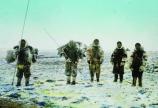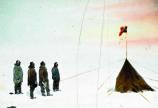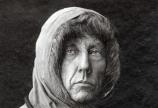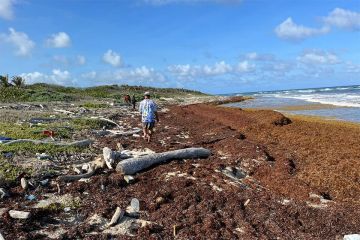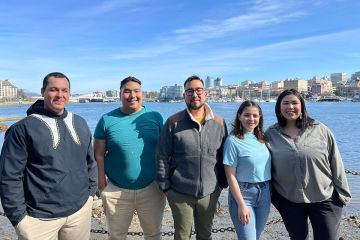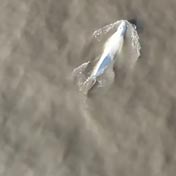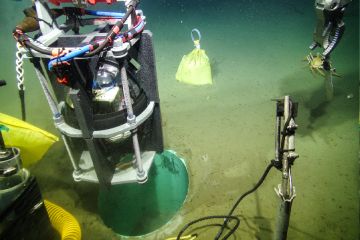Exhibit: Polar explorer Amundsen’s northern exposure led to South Pole success
- Mitch Wright
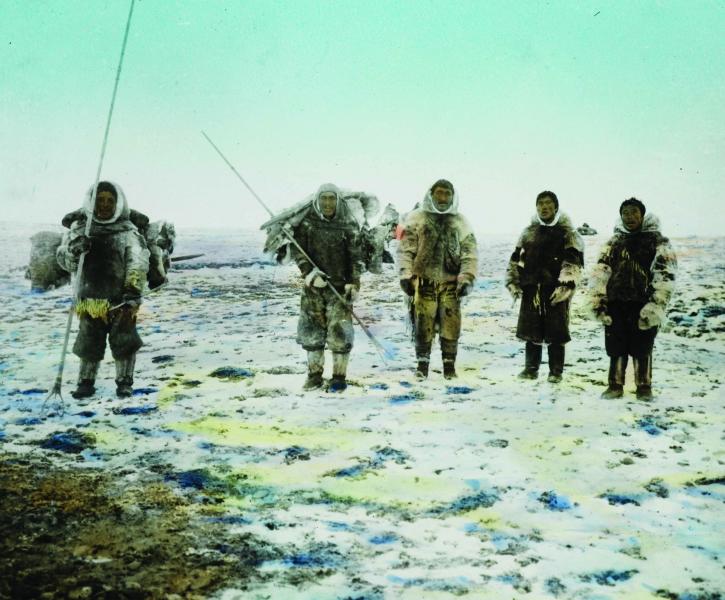
For several weeks during the first of three years in the Canadian Arctic, famed Norwegian polar explorer Roald Amundsen and his crew built igloos every day, under the watchful eye of an Inuit teacher, until they had mastered the art.
Their instructor shook his head at the sheer abundance of igloos, certain the crew had lost their senses to build so many. But such learning experiences and close relationships developed with the Inuit while on a quest to navigate the Northwest Passage from 1903–1906 proved valuable in Amundsen’s later success in becoming the first person to reach the South Pole on Dec. 14, 1911.
“It was the difference,” says Jay Ruzesky, a UVic alumnus, Amundsen descendant, and English professor at Vancouver Island University who recently published In Antarctica: An Amundsen Pilgrimage, a book about his own effort to retrace Amundsen’s journey south.
“Part of that expedition for him was preparation for going after the North Pole. He knew who to learn from and he wanted that contact and connection with the Inuit,” Ruzesky says of Amundsen’s experience in the Canadian north. “In Antarctica, the Norwegians were wearing Caribou hides and wolf skins and the British were wearing woolen parkas.”
An exhibition of photos by Amundsen and text from abridged versions of manuscripts from public lectures about his time in the Arctic will be on display at the University of Victoria June 1–8.
Cold Recall – Reflections from the Northwest Passage includes 51 large panels depicting both the scientific work of Amundsen and his crew while in the Arctic and their life with the Inuit people. The exhibit at the UVic Libraries will be located in the lower library lobby, outside the Maltwood Gallery, and is curated to feature 30 panels highlighting life among the Inuit. In addition to the exhibit, vintage footage of Amundsen’s exploration to the South Pole will also be available for viewing.
Ruzesky notes that Amundsen’s effort to make a visual record of his expedition was prescient, given the time period. He couldn’t bring a photographer, but Amundsen recognized he’d need to give public lectures to raise money upon his return and having strong visuals would dramatically enhance the talks. Thus the lantern slides upon which the Cold Recall exhibit is built.
“Those lantern slides were pretty powerful for people,” Ruzesky says.
The Cold Recall exhibit is on loan from the Norwegian government to the Association for the Advancement of Scandinavian Studies for Congress 2013. More than 7,000 delegates are coming June 1–8 for Congress 2013, a unique gathering of scholars, students and policy-makers hosted by UVic in partnership with the Canadian Federation for the Humanities and Social Sciences.
The Cold Recall exhibit opens is free and open for public viewing 7:30 a.m. to 9 p.m. weekdays and 10 a.m. to 6 p.m. weekends from June 1–9, with an official opening planned for June 3.
The UVic display coincides with the May 17 opening of the Race to the End of the Earth exhibit at the Royal BC Museum. It details the competition between Amundsen and British Navy Capt. Robert F. Scott to be first to reach the South Pole.
Photos
In this story
Keywords: arctic, Roald Amundsen

